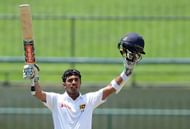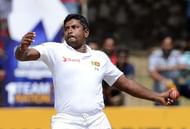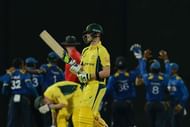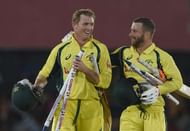After what had turned out to be a torrid tour of the United Kingdom, wherein Sri Lanka had failed to win a single game of competitive cricket, the home series against Australia was being seen as a nightmare that was about to befall on the Lankans. The departure of the greats, the extended transition stage and injuries to some of the key players had reduced the Lankan lineup to a rubble, and if at the beginning of the series you would have told someone that Sri Lanka would go on to whitewash the No. 1 Test team at the time, you would have been labelled as a troll.
Uncertainties, however, are as much a part of the game as are the results that transpire. Even the biggest of optimists would have lost a large chunk of their faith when Sri Lanka were bowled out for 117 on the first day of the first Test in Kandy. And those who would have still managed to put their faith behind the beleaguered side would have been left dumbfounded after Australia managed to get a slender 1st innings lead of 86 runs.
Kusal Mendis – Sri Lanka’s new hero
Rangana Herath had done the usual by picking up 4 wickets, while debutant Lakshan Sandakan emerged as a surprise entrant with his own four-wicket-haul. However, this slender first innings lead was speculated to be too much for the Lankans to scale, as they had only recently been bowled out for 117 – only 31 more runs. The result looked obvious, save for one man – who had been the only positive that the island nation could take out of their tour to England – who decided to step up and take the Australians on.
What ensued was a knock of 176 runs off 254 balls and an innings that, within the duration of five gruelling hours, changed the face of the game. From trailing behind by 86 runs, Sri Lanka now lead the Aussies by 267 runs. The target wasn’t an impossible one to achieve, but given the predicaments of a day 4 pitch in the subcontinent, and the Herath factor favouring the Lankans, the hosts were in the driver’s seat, all of a sudden.
It was there that the downfall began. A downfall that even the greatest of cricket scientists wouldn’t have predicted. A downfall that exposed the hollow skeleton that lied behind the rough, bullying men from down-under. Australia just could not play spin. Herath picked up five wickets to bowl the visitors out for 161. Sri Lanka won the first Test by 106 runs. Predictions and astrology went out of the window.
The debacle was evident, it was prominent as well, but for a side such as Sri Lanka – that had just endured one of its worst tours of England – to beat the No. 1 side in the world took some believing. So Sri Lanka decided to go one step better in the next Test at Galle.
A resurrection of magnanimous proportions
Mendis was at it again. Although he missed out on a hundred this time, the 21-year-old made sure that he scored at least as many runs (86) as was Australia’s lead in the first innings of the last Test – one of the only two occasions that they led the hosts in the entire series. Sri Lanka piled up 281. Australia capitulated for 106 – their lowest ever Test score in Sri Lanka. Herath, this time, was accompanied by Dilruwan Perera – an all-rounder who would go on to make a lasting impression on the series – and the duo shared four wickets each.
Perera was to play his role with the bat as well in the same game when in he came in to bat at 98/5 and smashed 64 runs off 89 balls with 7 fours and 2 sixes. Australia were set 413 to win. Herath did the rest. The visitors lost by an even bigger margin – 229 runs – as the veteran left-arm spinner picked up another 10-wicket-haul.
Colombo offered some solace to the Aussies in the fact that they were able to cross the 300-run mark for the first time in the series. The game had already seen four centuries being scored in the first two innings. But the best of them all was yet to come. Kaushal Silva hadn’t done much justice to the long rope that was handed to him as a Test opener. That he chose an opportune moment to answer which proved out to be an insult to injury can be termed as a coincidence.
Silva’s 115 helped SL declare at 347/8, setting Australia 324 to win. They’d managed 379 in the first innings, but couldn’t manage even half of it in the second. The 40-year-old veteran picked up 13 wickets in the match, and 32 in the series. Australia were whitewashed for the third consecutive time in the subcontinent.
The fallout that ensued
The writing was on the wall. The frailties of the Australian lineup against spin stood exposed and both Steve Smith and coach Darren Lehmann were drilled for answers they couldn’t fathom. "I’d be lying if I said I hadn’t replayed my dismissals from this series over and over in my head when I’ve been alone in my hotel room. Looking back, there are several shots that I regret playing," said Smith, after the Test whitewash.
It wasn’t just him who would have replayed those shots. Probably, the squad in its entirety was doing the same. Lehmann had anxious words to offer, “The difference is we've got to change in the subcontinent. Results will say that with India, UAE and now Sri Lanka.”
“We've got to change the way we pick and shape up the squad for a subcontinent (tour). We have to look at all different angles, I suppose. The shape-up of the side – whether you need one quick, two quicks, three quicks, all-rounders, and see how we play.”
Thankfully, the next assignment was with the white ball and in a format that brought fewer risks and greater risk taking abilities. However, for one man in the side, the time for adventurous endeavours was over, at least for the tour. After narrowly winning the first ODI and suffering at the hands of another left-arm spinner, Amila Aponso, the Australian captain felt that he'd had enough.
The decision to withdraw from the tour midway could have been a strategic one, but in popular opinion and the face of it, it only gives the feeling of backing away. The Australians might value their home season to the core, but they need their best batsman to prosper, if they are to win future tours to the subcontinent. That Smith’s withdrawal was a blessing in disguise was, yet again, foreseen by only a few.
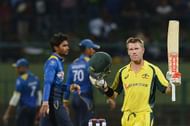
Warner takes charge
David Warner’s Sunrisers Hyderabad had won the Indian Premier League (IPL) for the first time in 2016, and much like the team they defeated in the final – the Royal Challengers Bangalore – the captain had played a major role in their maiden title victory. Thus, when the opportunity came to lead the national side, Warner wasn’t the one to back away.
In Dilshan’s final ODI, the third of the series in Dambulla, Australia were helped by Sri Lanka’s ailment of losing too many wickets in the middle overs after a decent start by their top three. Barring Dinesh Chandimal's century and Dilshan's goodbye knock of 42, none of the Lankan batsmen could play with patience. Mitchell Starc's thunderbolts didn't help them either.
The second of the two ODIs scheduled for Dambulla – this time sans Dilshan – saw Dhananjaya de Silva scored a promising 76, but this time, neither Chandimal or the captain, Angelo Mathews could give him any sort of a support. On the other hand, Aaron Finch and George Bailey continued their rich vein of form that they had picked up since the beginning of the series and guided Australia home.
Australia had won the series and had something to show in lieu of the time and resources spent on the tour. This series victory along with the form of George Bailey, and the ODI new recruit Travis Head would be some of the positives that they can take out from the series.
Australia salvage some pride
With the 5th ODI reduced to a formality, Warner, the captain, who had led from the front but hadn't quite contributed with the bat, took the onus upon himself to rub salt on Sri Lanka's injury. Chasing only 196 to win, courtesy some fine bowling by Starc and company, Warner battled his demons against spin and worked his way to a scratchy yet effective hundred to seal the series 4-1.
The turnaround was impressive. Australia did manage to win something, after being whitewashed in the whites. But the injury still lingered. That is tour will be judged more by their performances in the Tests than the victories in the ODIs and the record-shattering spree in the T20Is is anybody’s guess. However, the man who was responsible for picking the men for the tour had a different opinion.
“Good players are good players. That’s what we’ve got to remember. They’re usually good players because they can adapt to conditions,” said Rod Marsh, the chairman of selectors. “We had a bit of a blip here. But we’re not going to panic. There’s no way. We can’t afford to panic because it’s just ridiculous if we do.”
A ridiculous performance being dismissed as a blip might not have been the best of ideas to implement, but if Marsh’s believes so, Australia would have to prove him right when they come to India in February-March 2017.
Looking for fast live cricket scores? Download CricRocket and get fast score updates, top-notch commentary in-depth match stats & much more! 🚀☄️

